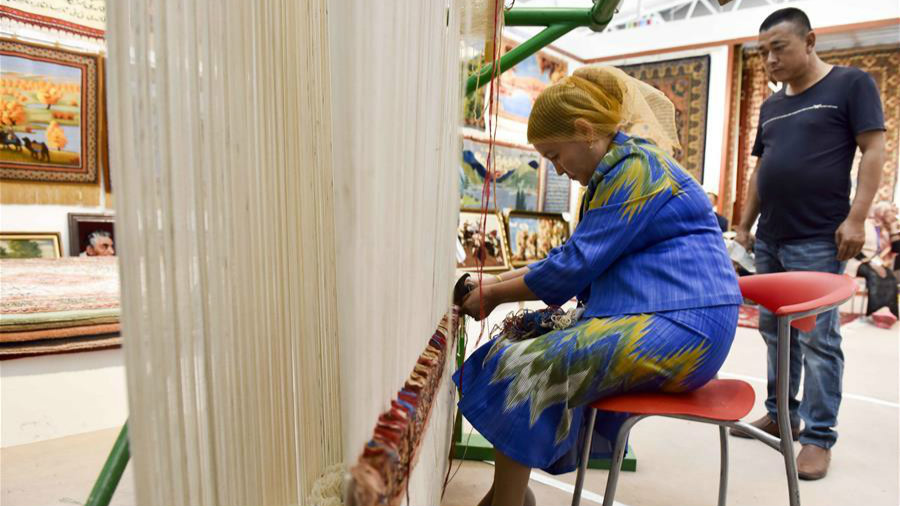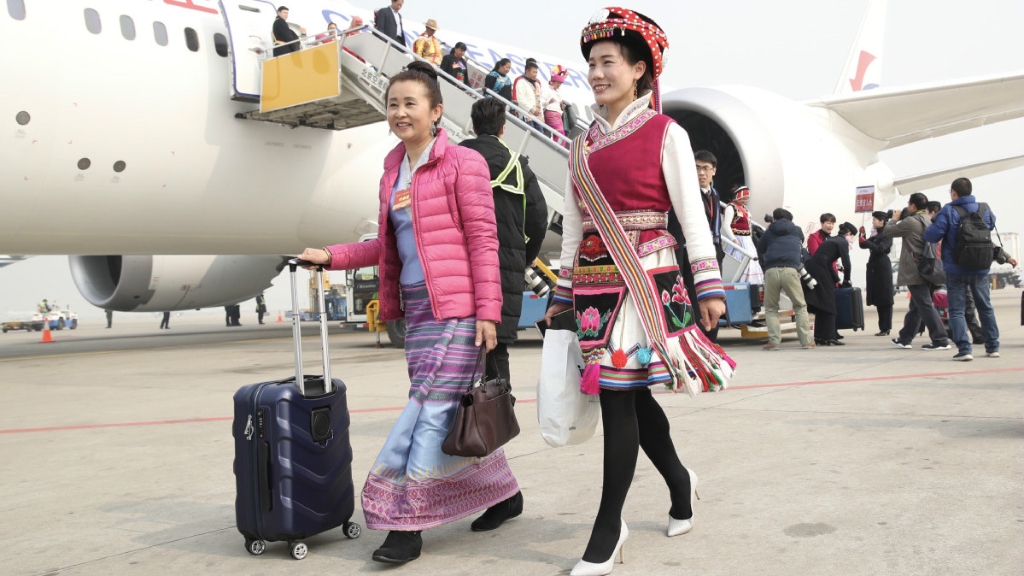Ma Haizhe, a mother of two, decided to return to her rural hometown-Xiaohe village of Tianshui city in Gansu province-in 2014 to take care of her children when her 6-year-old son was preparing to attend primary school and her daughter, 3, was old enough for kindergarten.
Like many other couples in Xiaohe, Ma and her husband left home and migrated to find work in a bigger city. The couple became servers in a restaurant in Xi'an, capital of Shaanxi province, soon after they married in 2008.
Ma gave birth to their son in Xi'an and came back to the village with him the next year.
Ten months later, she left him with her mother and rushed to Xi'an for work. For six years, the couple rarely came home other than during the Spring Festival.
Like Ma, 32, a growing number of rural women who are paying more attention to their children's education have chosen to stay in their hometowns to care for their kids themselves, according to Huang Lixia, director of the local women's federation in Huangmen township.
"The kids have improved a lot since she returned," Ma said. Compared with other children being cared for by grandparents, instead of spending a lot of time watching TV and playing on their mobile phones due to lax supervision, they have formed good study habits, she explained.
"I can help them with homework," she added.
Though the couple has reached a consensus on the importance of parental care, they have had to make a compromise.
Her husband now migrates alone to work in the Xinjiang Uygur autonomous region to support the family.
Given the increasing number of "left-behind" women like Ma who stay in their villages to take care of their parents and children while their spouses work in big cities, local groups and enterprises are training them to make handicrafts they can sell and sometimes offer them jobs to increase their earnings.
About a year ago, Ma used her spare time to learn an elaborate handicraft that threads plastic beads into strings and twists them into various shapes to form decorations such as vases with flowers, pen holders and animation figures.
Led by the local women's federation, women in the town could choose to learn many other skills including cross-stitching, knitting sweaters or woolen slippers and making wind chimes.
Ma posts her work on WeChat and Kuaishou, a short-video platform, to attract buyers. Apart from covering household expenses, her crafts earn her an additional 1,000 yuan ($146) per month.
"I'm happy to ease the burden for my husband," she said. "Spending my own money boosts my confidence and happiness."
In Qingyang city, northeast of Tianshui in Gansu, a group of women from nearby villages are sitting at a table and doing embroidery to make sachets, which the city is famous for.
Mi Xiaoying, who has worked in Qihuang Culture Communication Co for a decade, is embroidering a red tiger head. She said her child was admitted to college years ago and has now found a decent job in the city.
As moms come back to the village, rural pupils are increasingly being admitted to colleges, said Liu Lanfang, founder of Qihuang Culture.
Different from traditional factories where workers are stuck in assembly lines, women in some local firms like Liu's are free to work from home, which enables them to look after their parents and children.
"Cultural inheritance was my main focus at first," said Liu as a woman beside her embroidered a frog, which symbolizes fertility and blessings. "Now, I also support the mission to lead more sisters to get rid of poverty."















.jpg)









.jpg)


